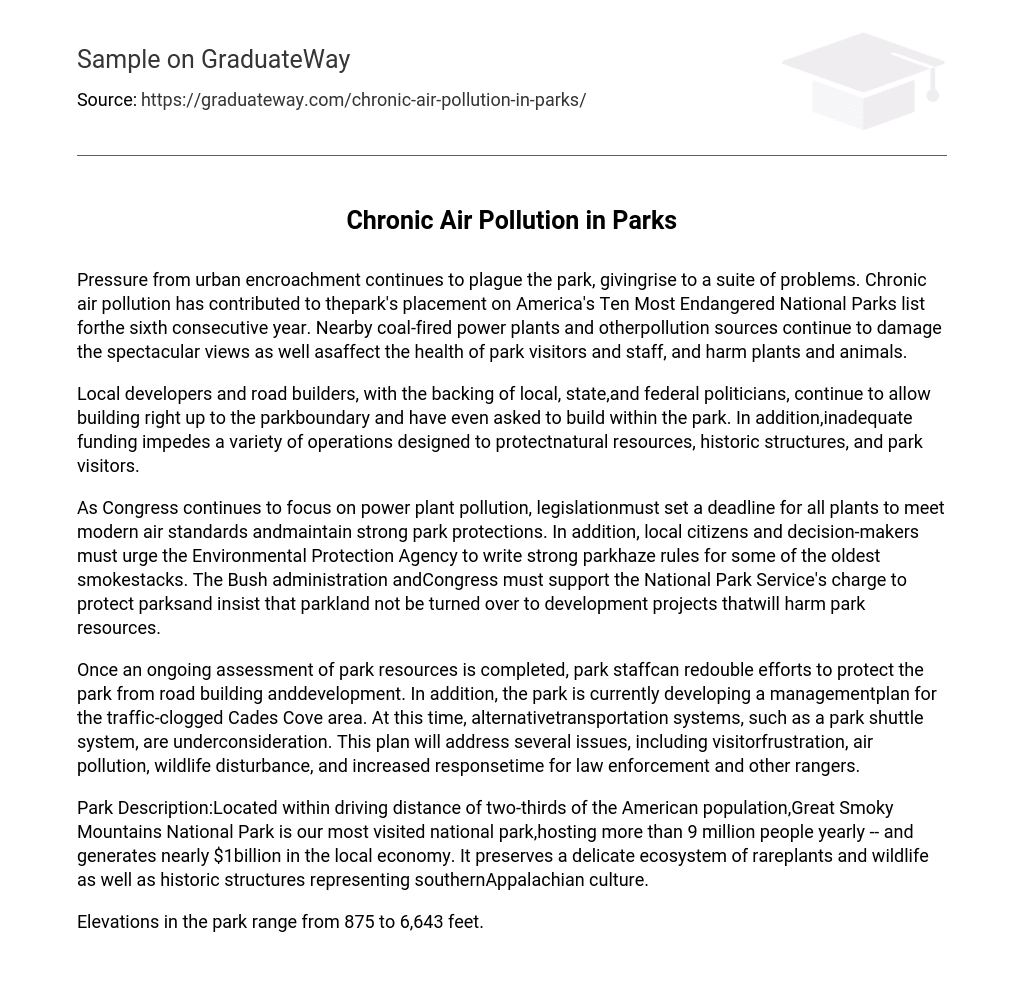Pressure from urban encroachment continues to plague the park, givingrise to a suite of problems. Chronic air pollution has contributed to thepark’s placement on America’s Ten Most Endangered National Parks list forthe sixth consecutive year. Nearby coal-fired power plants and otherpollution sources continue to damage the spectacular views as well asaffect the health of park visitors and staff, and harm plants and animals.
Local developers and road builders, with the backing of local, state,and federal politicians, continue to allow building right up to the parkboundary and have even asked to build within the park. In addition,inadequate funding impedes a variety of operations designed to protectnatural resources, historic structures, and park visitors.
As Congress continues to focus on power plant pollution, legislationmust set a deadline for all plants to meet modern air standards andmaintain strong park protections. In addition, local citizens and decision-makers must urge the Environmental Protection Agency to write strong parkhaze rules for some of the oldest smokestacks. The Bush administration andCongress must support the National Park Service’s charge to protect parksand insist that parkland not be turned over to development projects thatwill harm park resources.
Once an ongoing assessment of park resources is completed, park staffcan redouble efforts to protect the park from road building anddevelopment. In addition, the park is currently developing a managementplan for the traffic-clogged Cades Cove area. At this time, alternativetransportation systems, such as a park shuttle system, are underconsideration. This plan will address several issues, including visitorfrustration, air pollution, wildlife disturbance, and increased responsetime for law enforcement and other rangers.
Park Description:Located within driving distance of two-thirds of the American population,Great Smoky Mountains National Park is our most visited national park,hosting more than 9 million people yearly — and generates nearly $1billion in the local economy. It preserves a delicate ecosystem of rareplants and wildlife as well as historic structures representing southernAppalachian culture.
Elevations in the park range from 875 to 6,643 feet.





